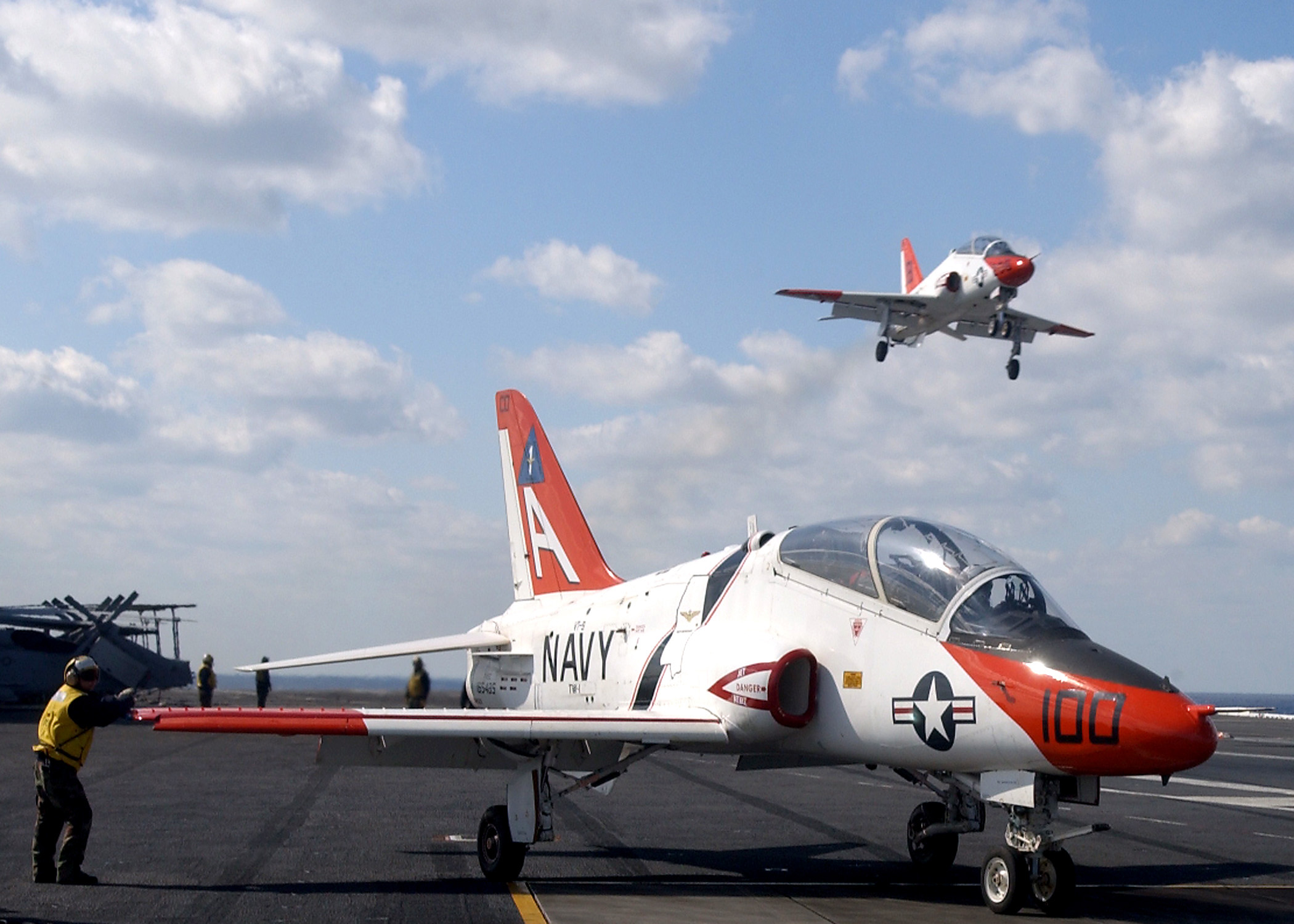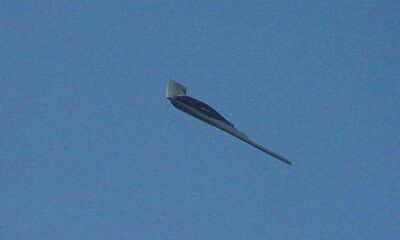Executive
Goodbye, Tailhook? No Carrier Landings for New Navy Jet Trainer
The U.S. Navy will shortly buy a new jet trainer for carrier pilots, but will not use it to train for carrier landings.

Spoiler alert: if you haven’t been following the Navy’s plans this summer to buy a new jet trainer for carrier pilots, a big change is coming.
The Navy’s newest jet trainer will not be designed to land on carrier decks
It won’t have a tailhook. The new trainer to replace the venerable T-45 Goshawk will not, repeat not, be built to land on a carrier.
No one is giving up on carriers. “The number-one battering ram of the United States Navy is a carrier air wing,” Navy Rear Adm. Rich Brophy, Chief of Naval Air Training (CNATRA), said in July. Secretary of Defense Lloyd Austin has proven that again by positioning not one but two carriers near the Red Sea to defend US forces and allies and keep the pressure on Iran.
Carrier pilots are trained, not born, and aviators deployed today can thank the T-45 Goshawk for teaching them how to fly around the carrier and make an arrested landing “trap.” Now, due to a combination of software advances and cost concerns, future Navy pilots will make their first traps in their combat jets, the F/A-18s and F-35s. It turns out that software developments have changed carrier landings. Magic Carpet (Maritime Augmented Guidance with Integrated Controls for Carrier Approach and Recovery Precision Enabling Technologies) arrived several years ago and assists pilots with the approach. Today’s F/A-18s and F-35s are so sophisticated that the Navy has more options for this delicate training phase.
The Navy plans to buy 145 new trainers scheduled to go into service by 2028. In acquisition terms, that’s coming up fast.
Three factors should drive the choice of a jet trainer
As a result, the Navy is looking at aircraft that are ready now. This is a good plan; the T-45 was a British plane to start with, then modified to Navy specifications. The current candidates once again draw on allied manufacturers, including the TF-50N from Lockheed Martin and Korea Aerospace Industries, Textron’s offering of the Alenia Aeromacchi M-346N, and SNC’s bid with a version of TAI Hürjet, a new supersonic entrant that first flew in 2023. Rounding out the list is Boeing’s T-7 Red Hawk, which is the new USAF trainer that is in low-rate production.
With so much to choose from, the Navy is in a powerful position. Three factors should drive the choice.
Field carrier landing
The Navy still prioritizes field carrier landing practice to train students on procedures for flying around the ship. As of July, Navy leaders said they hadn’t yet decided about the field carrier landing practice requirement. If the Navy requests it, the new trainer must be sturdy enough to fly that approach. Nostalgia aside, the Navy will undoubtedly solve the carrier landing training sequence to its own satisfaction. Historically, the retirement and introduction of new trainers altered the training pipeline for each generation of aircraft. This is a near-term decision the Navy can make with confidence based on experience, discussion, and data.
Advanced tactics
Factor two is arguably more important. The next trainer will be expected to deliver more for the tactical syllabus, giving new pilots more flight time with advanced maneuvers and procedures prior to their transition to the F/A-18EF and F-35s. Here, the decision is not so clear. For example, while some candidate aircraft are supersonic, others are not. All offer different mission systems. The Navy will need to evaluate current systems, reliability, and growth, including live, virtual, constructive training and augmented reality, as well as the stock in trade of advanced air warfare. The Navy will need to make an astute calculation about its advanced combat lead-in requirements for the next 30 years.
Lifecycle cost
Factor three, lifecycle cost, should be getting a lot more attention, for it may be the most important factor in the long term. All of Washington, DC knows the Navy is short on cash. Intense budget pressures will continue as the Navy modernizes to deter China. One of the remedies is equally well-known: taking measures to trim lifecycle costs at the outset of a program. This is a solution best applied early, and with the new jet trainer, the Navy has a golden opportunity.
Reduced lifecycle costs for a trainer can deliver significant savings, which will be sorely needed for the types of software, sensor and weapons upgrades combat platforms will need in years to come.
Don’t worry, future naval aviators will still assign bragging rights based on the number of arrested landings or “traps” they achieve. The recent pace of deployments of carriers to the Red Sea offers just a taste of the potential operating tempo for drawn-out conflict in the Pacific. The Navy is developing new drones and weapons and still has plans for a next-generation manned fighter. Cost pressures will be intense, and with China becoming a great global power, no mission will be optional. Sacrificing a tailhook on the new trainer is smart. An affordable trainer is a must.
This article was originally published by RealClearDefense and made available via RealClearWire.
Dr. Rebecca Grant is a national security analyst and vice president, defense programs for the Lexington Institute, a nonprofit public-policy research organization in Arlington, Virginia. She has held positions at the Pentagon, in the private sector and has led an aerospace and defense consultancy.
-

 Civilization2 days ago
Civilization2 days agoDC Pipe Bomb Arrest Raises Questions About Christopher’s Wray’s FBI
-

 Civilization5 days ago
Civilization5 days agoYoo Hoo, VP Vance—Your Character is Showing!
-

 Executive5 days ago
Executive5 days agoThe Last Supper: New York’s Socialist Feast
-

 Guest Columns4 days ago
Guest Columns4 days agoCongressional Leaders See Far Higher Stock Returns Than Peers
-

 Civilization3 days ago
Civilization3 days agoThe Legal Logic Behind U.S. Operations Against Narco-Terrorist Networks
-

 Civilization5 days ago
Civilization5 days agoFacing Facts & Rolling Back Mythologies: The New National Security Strategy
-

 Civilization4 days ago
Civilization4 days agoHow Trump Changed America
-

 Executive3 days ago
Executive3 days agoNewsom’s ‘National Model’ for Homeless Wracked by Fraud














